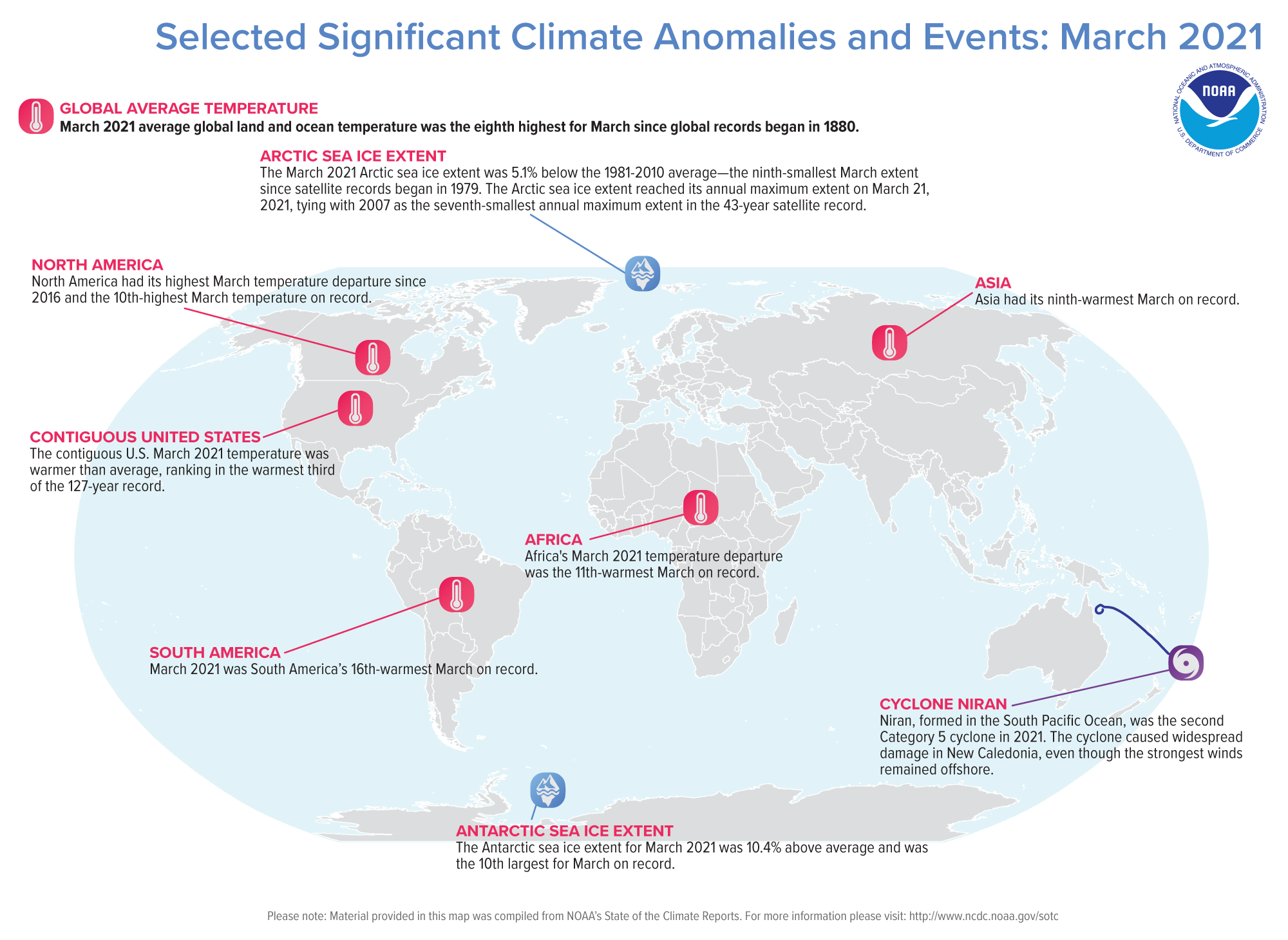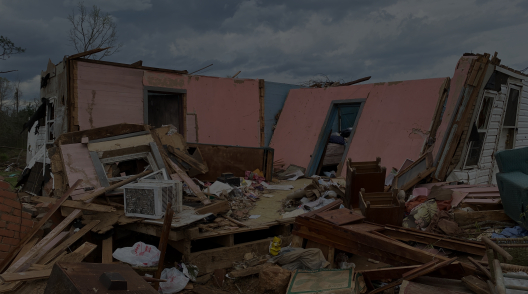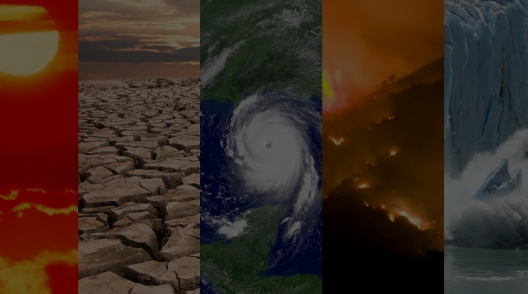March 2021 and year to date were among Earth’s top-10 warmest

Continuing the balmy trend to 2021, the month of March ended as the world’s eighth-warmest March in 142 years of record-keeping.
Moreover, the year to date tied for ninth-warmest YTD on record for the planet, according to NOAA’s National Centers for Environmental Information.
Below are more highlights from NOAA’s latest monthly global climate report:
Climate by the numbers
March 2021
The average global land and ocean-surface temperature for March was 1.53 degrees F (0.85 of a degree C) above the 20th-century average of 54.9 degrees (12.7 degrees C). This ranks the month as the eighth-warmest March in NOAA’s 142-year global temperature record.
March 2021 was the 45th-consecutive March and the 435th-consecutive month with temperatures above the 20th-century average.
Year to date | January through March
The global land and ocean-surface temperature of 1.37 degrees F (0.76 of a degree C) above the 20th-century average tied 2007 as the ninth-warmest YTD in the record.
As regions, Asia and the Caribbean had their fourth and eighth-warmest YTD temperature on record, respectively. Meanwhile, Oceania had its smallest YTD temperature departure since 2012.

More notable climate events in the March report
-
Arctic sea ice was scant, again: The sea ice coverage in March was 5.1% below the 1981–2010 average, ranking as the ninth smallest for March in the 43-year record. And, according to preliminary data, Arctic sea ice reached its annual maximum coverage of 5.70 million square miles on March 21, tying with March 2007 for the seventh-smallest such coverage on record.
-
A steamy month for some parts of the world: March 2021 was at least 3.6 degrees F (2.0 degrees C) warmer than average across southern and eastern Canada, the eastern half of the contiguous U.S., the Middle East, southern and eastern Asia, as well as parts of central Antarctica.
-
March snow cover was insufficient: The Northern Hemisphere snow cover last month was 12th smallest on record for March. Across North America, snow cover was the ninth smallest on record for March, while Eurasia had its 14th-smallest coverage.
More > Access NOAA’s latest climate report and download the images.








 User Center
User Center My Training Class
My Training Class Feedback
Feedback














Comments
Something to say?
Log in or Sign up for free